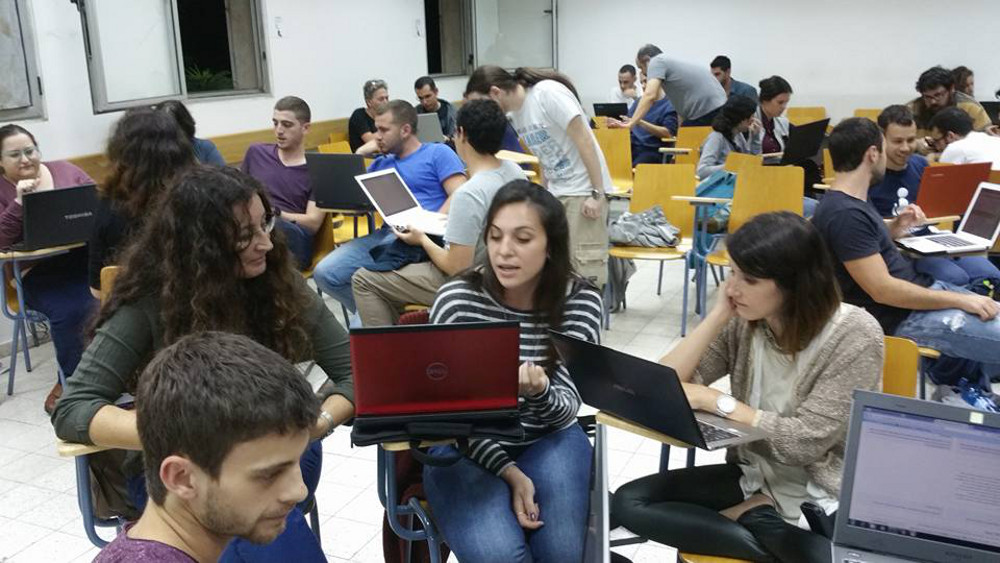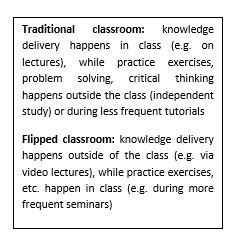
Simon Fokt draws on evidence-based research to promote why he thinks a flipped classroom model leads to effective teaching…
More than 700 studies have confirmed that lectures are less effective than a wide range of methods for achieving almost every educational goal you can think of. – Times Higher Education
There are many reasons to think that adopting a flipped classroom model is a good idea, yet very few people actually do so. And this is no wonder: flipped classrooms are perceived to be more work, and their advocates tend to have a salesperson’s air around them which will likely discourage anyone who doesn’t already share their enthusiasm.
To encourage them in PPLS, I compiled an evidence-based report, written casually and without overstating the benefits or employing ‘promotional’ language. I don’t underplay the possible problems either, as nothing is more suspicious than a new wonder-method with no flaws.
 So why should you care about flipped classrooms? The reasons boil down to: your teaching will be better and more interesting for both you and your students if you replace the boring part (lecturing at 300 bodies in a massive room) with videos or some other pre-prepared materials, and focus on the interesting part (seminars, discussions, projects).
So why should you care about flipped classrooms? The reasons boil down to: your teaching will be better and more interesting for both you and your students if you replace the boring part (lecturing at 300 bodies in a massive room) with videos or some other pre-prepared materials, and focus on the interesting part (seminars, discussions, projects).
The main argument relies on the evidence regarding the effectiveness of traditional lectures. Which isn’t great. Based on a comprehensive literature review, I look at how traditional lectures compare to other teaching methods: seminar discussions, project inquiry, reading and independent study, video and audio lectures, or programmed learning:
- Lectures are reasonably effective at information transfer. Most likely they are just as good as discussion classes, videos, reading, etc. But that’s not good news – being as good as reading a textbook isn’t great.
- Lectures are significantly less effective than discussions and other methods at promoting thought, teaching values and inspiring interest in the subject.
- The average human attention span is probably too short for hour-long lectures, and individual differences mean that a one-size-fits-all lecture likely doesn’t actually fit anybody.
Naturally, all this can be mitigated by making your lectures really awesome, engaging and inspiring. If that’s what you want, great! All I suggest, is that flipping your classroom is also a good way to make your teaching awesome, engaging and inspiring.
If video lectures are no worse than traditional lectures at information transfer, we lose nothing by moving all the info-dump to videos. But we gain: old lecture time can now be used for seminars, discussions, projects, etc., making us better at promoting thought, teaching values and inspiring interest in the subject. This seems like a pretty good deal. Further, we can record videos in short bits which won’t be a stretch on attention span and will allow individual students to engage at a speed that suits them best. In the report, I present two models showing how this could be implemented.

But is designing a flipped classroom more work? I don’t try to dodge it – yes, it probably is, at least in the first year you run it. But hopefully this can be factored in your hours, or covered through some teaching development grant. The report makes some useful suggestions here.
With the worries addressed, let’s focus on the advantages:
- You replace a potentially less effective teaching method (lectures) with a more effective one (seminar, discussion, etc.)
- Students get more quality contact time, more opportunities to ask questions and talk to you. That’s both good for them and likely to increase their satisfaction.
- More project work or discussion time makes it easier to integrate formative and continuous assessment
- You create a database of videos which can be re-used, shared, made into open education resources.
- Lecture recording is on the rise. Class lecture capture will record all the small mistakes, embarrassing moments, and everything you’d rather not have on tape. Recording purposefully at your desk gives you more control.
Now I’m off to try this out within PPLS. Wish me luck, and feel free to use my report in promoting flipped classrooms in your area!


